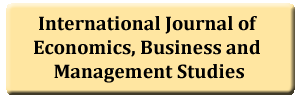Teaching Methods and Students’ Academic Performance in Kinematical Motion: Graphical Interpretation and Conceptual Understanding
DOI:
https://doi.org/10.20448/801.51.69.103Keywords:
Kinematical, Teacher-centered, Student-centered, Teacher-student interactive, Teaching methodology and academic performance.Abstract
The study investigated the differential effectiveness of teacher-centered , student-centered and teacher-student interactive instructions on students’ academic performance in kinematical motion particularly in conceptual understanding and graphical interpretation. A sample of 112 first year physics undergraduate PHY110 students of MUCE was used for the study. The design adopted in the study was a Quasi- Experimental Design ( non-randomized pre-test and post-test control group design). The instrument used in gathering data for the study was survey questionnaire and a combination of GIST and MCT. The internal reliability coefficient of the test was 0.74 using Kuder Richardson Formula-20 (KR-20). One way ANOVA test were used for statistical analysis. The one way ANOVA technique, F(2, 93) =0.316, p > 0.05) and the Tukey HSD post-hoc results indicated no significant differences on the effectiveness of the three teaching methods. However, the mean scores results demonstrated that teacher-student interactive method group had relatively higher academic performance and was thus the most effective teaching method, followed by student-centered method while the teacher-centered approach was the least effective teaching method.




